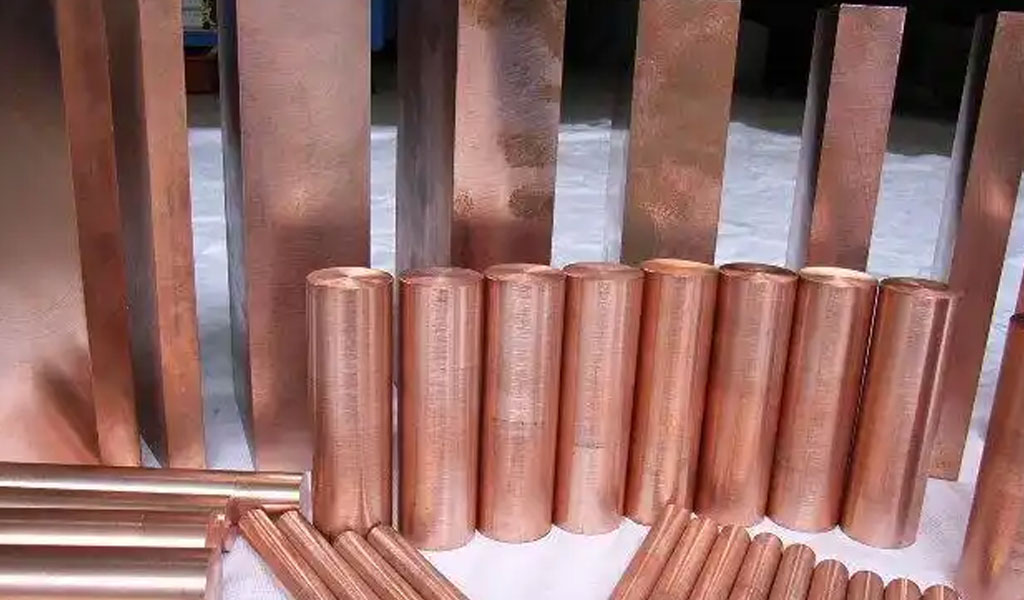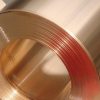
Beryllium bronze is primarily made from a metal called beryllium, combined with some processed materials. It possesses excellent elasticity and can be used as a tool for buffering the connections between two or more mechanical components. Therefore, products made from beryllium bronze can effectively protect mechanical components from wear. Additionally, beryllium bronze products have very useful properties that other metals and alloys lack. When beryllium bronze is used to heat metals, the internal components and inherent conditions of the beryllium bronze can form a protective layer on the material, preventing the aging of the original parts. During engineering implementation, meticulous attention to detail is crucial, identifying and improving any flaws. The following discusses the shortcomings of the elastic heating process technology for beryllium bronze and methods for improvement.
Pre-treatment Process Before Heat Treatment
During the reprocessing of beryllium bronze, its surface is prone to adhering to various contaminants, such as sweat from workers and machining coolants, which are unavoidable during processing. Particularly, the cooling fluid used in electrical discharge machining is the most severe contaminant on the surface of beryllium bronze.
Therefore, before electroplating, we first clean the surface using a mixture of three acids to remove the black oxides that have formed. Upon observation, we find that many pockmarks appear on its surface, and after silver plating, many more pockmarks form, significantly affecting surface quality. Moreover, the subsequent cleaning process can render the surface rough, and its brightness falls far short of requirements, seriously impacting the quality and pass rate of the parts.
To address these processing issues, we have developed a third processing method and established a cleaning process: first, wash the parts with clean water, then soak them in kerosene, followed by rinsing with gasoline. After allowing them to dry for some time, we use ethanol for ultrasonic cleaning before drying again, and finally, we conduct solution treatment. Parts processed this way do not exhibit oxide adhesion or color changes, laying the groundwork for subsequent electroplating.
Process of Solution Treatment
Before forming parts made from hard beryllium bronze, softening treatment is necessary. Generally, solution treatment is used for softening, which is commonly referred to as quenching. This process utilizes the solubility of beryllium in copper, which varies with temperature, to treat the beryllium bronze. The main method involves placing the beryllium bronze products in box-type electric furnaces or vacuum furnaces for heating. However, using specialized heat treatment equipment for beryllium bronze yields better results. During the solid treatment of beryllium bronze, personnel must preheat the furnace, controlling the temperature to around 800°C, and then place the pre-treated parts inside. They must maintain this temperature for 8 to 20 minutes. Once the holding time is reached, the parts must be quickly transferred to flowing cold water for cooling to achieve a supersaturated solid solution.
Furthermore, to manufacture parts with a higher surface quality, tubular protective atmosphere furnaces or vacuum furnaces should be used for pre-treatment. The aim of the solid solution treatment is to ensure that the beryllium-rich phase in beryllium bronze fully integrates with the matrix, maximizing the concentration of the supersaturated solution and improving the surface quality of the beryllium bronze parts. Additionally, after softening, the beryllium bronze parts exhibit good plasticity, providing convenience for subsequent processing and reducing the incidence of accidents.
Equipment Selection for Aging Treatment of Beryllium Bronze
When performing aging treatment on beryllium bronze, it is crucial to select appropriate heating equipment. Different equipment yields varying results, so using specialized heating devices for solid treatment is essential to enhance the quality of heat treatment for beryllium bronze. Furthermore, during heat treatment, personnel should use specialized tools to secure the parts, as inadequate securing can lead to bending or breakage due to the high temperatures in the furnace, affecting precision. Therefore, controlling the heat treatment process is necessary to meet dimensional accuracy requirements.
Precautions During Aging Treatment of Beryllium Bronze
- Before aging treatment, personnel must clean the parts to ensure the surface of the beryllium bronze is clean and avoid forming an oxide layer during aging treatment, which could affect treatment quality. Typically, a 30% hydrochloric acid solution is used for cleaning; if the oxide layer is thick, the cleaning time can be extended.
- If air, oil baths, or other media are used during aging treatment, an oxide layer may form on the surface of the beryllium bronze parts. While this phenomenon does not affect the material’s properties, it can impact subsequent work. Therefore, to prevent oxidation on the surface of the beryllium bronze parts, personnel should strengthen control during aging treatment and perform rapid cooling after completion, introducing a protective atmosphere such as nitrogen, hydrogen, or carbon monoxide.
Conclusion
Through our practical experience, we find that following the methods described above for processing ensures that no black oxides adhere during machining, significantly reducing the workload before electroplating and establishing a foundation for the quality of the surface in subsequent electroplating. After the final electroplating process, there are no non-compliant products, and stability is improved, achieving a 100% pass rate while minimizing waste and production costs, resulting in better economic performance. It is evident that the thermal processing technology for beryllium bronze elastic components can effectively enhance work quality and the perfection of processed products, thus warranting widespread application of this technology.
Results and Analysis
(1) Selection of Sample Treatment Conditions.
Although the dry ashing method can rapidly ash a large amount of organic matrix under certain conditions, it requires a considerable amount of time for carbonization and ashing, making it relatively time-consuming and inefficient. Microwave digestion is one of the most effective pre-treatment methods for metal element analysis. Geological samples undergo high-temperature and high-pressure digestion in a sealed digestion vessel, which prevents sample loss, accelerates digestion speed, and minimizes reagent consumption, making it suitable for determining easily volatilized or lost elements. Therefore, microwave digestion is the chosen pre-treatment method. Additionally, pre-digestion is conducted the night before the experiment to enhance the rate and quality of digestion. To ensure maximum preservation of heavy metals in geological samples during digestion, a reasonable digestion procedure is selected. Both perchloric acid and nitric acid possess strong acidity and oxidation; among them, nitric acid causes minimal interference in metal element analysis, making it an ideal microwave digestion solution. To avoid potential accidents caused by uneven heating of perchloric acid in microwave digestion equipment, its use as a digestion solution should be minimized. Hydrogen peroxide can accelerate the digestion speed. To select the best digestion reagents while considering the accuracy of temperature sensors, the total volume of reagents should not be less than 5 mL; therefore, 10 mL of nitric acid and 5 mL of perchloric acid are used.
(2) Bias in Heavy Metal Element Determination.
According to the designed experimental methods and steps, blank solutions of geological samples are continuously tested ten times, and the detection limit for metal elements is calculated by dividing twice the standard deviation by the slope of the curve. The geological samples are tested according to the established digestion system, and after digesting three parallel samples, the concentrations of copper, zinc, and chromium are measured, and their relative standard deviation values are calculated. Based on the measured concentration values, a standard substance of 25 mg/kg is added, and the recovery rate is calculated (see Table 2).
(3) Conclusion.
This experiment utilizes a fully closed microwave digestion method for the treatment of geological samples. Through experiments with different digestion systems, a standard digestion system of 10 mL of nitric acid + 1 mL of perchloric acid + 1 mL of hydrofluoric acid is selected. Under optimal conditions of the selected equipment, the best characteristic spectral lines are chosen to analyze the geological samples, along with standard addition methods to eliminate matrix interference, allowing for analysis of metal elements such as copper, zinc, and chromium. The precision ranges from 1.14% to 2.31%, with recovery rates between 93.0% and 104.0%, and the standard substances used are within standard limits, resulting in precise and reliable analysis. This method is suitable for treating geological samples and measuring multiple metal elements.
Final Remarks
This paper analyzes methods for determining heavy metal elements in geological samples based on a series of experimental steps and equipment reliant on microwave digestion. It investigates the chemical properties of metal elements and the methodology design. Experimental validation indicates that the methods proposed are highly effective. We hope this research can provide a theoretical basis for methods of determining heavy metal elements in geological samples.






